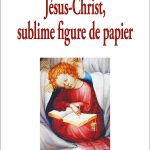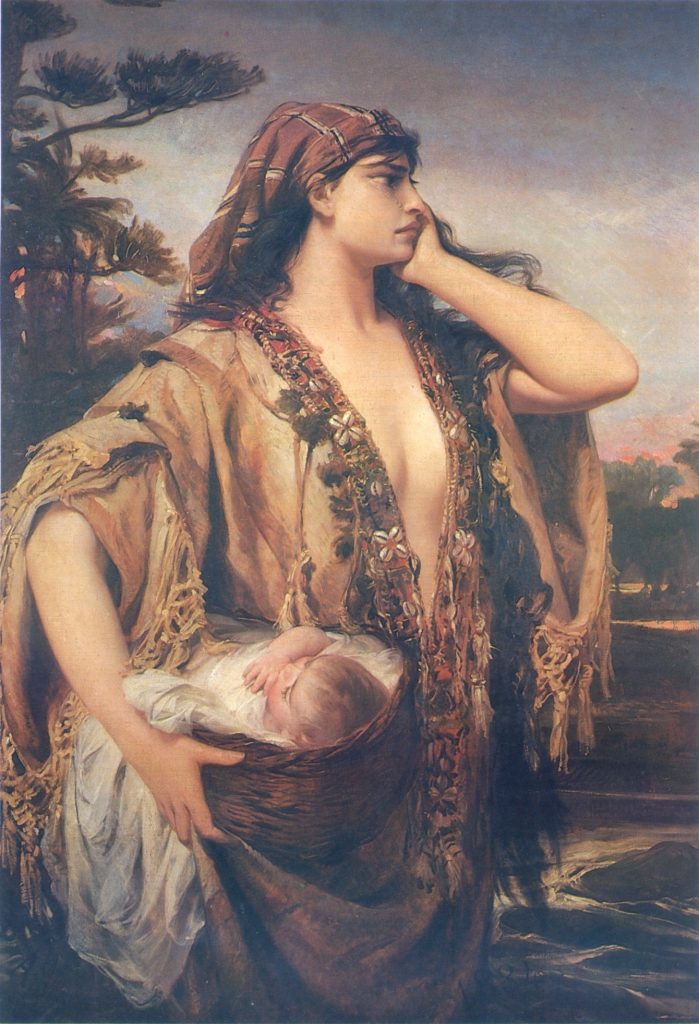 Continuing the series on Nanine Charbonnel’s Jésus-Christ, sublime figure de paper . . . .
Continuing the series on Nanine Charbonnel’s Jésus-Christ, sublime figure de paper . . . .
–o–
After this post I will pause from addressing NC’s book for a little while because I want to get a firm grasp of the next section before posting, and I think it is a very critical section, one that addresses the formation of the figure of Jesus in the gospels.
Here we continue the theme of suggesting what collective groups different individual persons in the gospels represent. The key takeaway is that there are reasons to think that certain names stand for larger entities, e.g. John the Baptist represents the Prophets of the “Old Testament” pointing to Jesus, the twelve disciples represent the foundation of the “new Israel” or Church, and so forth. In this post we have a look at the virgin mother of Jesus.
On “Twelve disciples” as the foundation of a “new Israel”: I have tended to think that the idea of the Twelve Disciples as a foundation of the Church was a second-century attempt to rebut Marcionism (i.e., the belief that Paul alone was the one true apostolic founder of the church). If so, the Gospel of Mark which arguably depicts Peter and the Twelve as failures (see Ted Weeden), was in some sympathy with Marcionism, but the later gospels with their positive spin on the Twelve stand in opposition to Marcionism; if so, they would have been authored closer to the mid-second century. Perhaps even the Gospel of Mark was written as an attempt to denounce attempts to establish a certain “orthodoxy” on the myth of The Twelve as opposed to Paul.
–o–
Other Vridar posts on the Cana miracle are by Tim Widowfield:
Mary and the Cana Wedding
Again we notice evidence of symbolism in a gospel story. We have a wedding narrative consisting of inversions of passages in the Jewish Scriptures. Other figurative language in the gospels leads us to see this wedding as a representation of an end-time event, a successful marriage to supplant the failed marriage of “old Israel” with Yahweh.
The following table blends parts of what I read in both Charbonnel and Mergui‘s books:
| Jn 2:1 | On the third day, | Hosea 6:2 “After two days he will revive us; on the third day he will restore us, that we may live in his presence. (i.e. a New Creation) |
| a wedding took place at Cana in Galilee | The Wedding = the covenant of Yahweh with his people Israel;
Galilee = the land of gentiles. (Isaiah 9:1) Cana = from late Hebrew qanah meaning to acquire, to gain, to possess (c.f. Cain) The scene represents the end time wedding of the enlarged Israel that includes gentiles. |
|
| Jesus’ mother was there | The mother is also the people, the bride (Isaiah 22) | |
| 2:2 | and Jesus [= YHWH who Saves] and his disciples had also been invited to the wedding. | The messiah is the husband of his people (Jer. 31:3) |
| 2:3 | the wine was gone,
“They have no more wine.” |
The wine is the Word or Law of Yahweh (Prov. 9:5; compare Ps. 73:10 where “waters” = word of Yahweh).
The old wine thus suggests the first (Mosaic) Law. The words of the mother of Jesus, or the old Israel, contains a recollection of the rebellion of Israel with its complaining to God of what they lacked, or rebellion against the law. This may explain Jesus’ distant response. |
| 2:4 | “Woman” | = Eve (Genesis 2:23) |
| 2:5 | His mother said to the servants, “Do whatever he tells you.” | = the text of Genesis 41:55 — “Go to Joseph and do what he tells you.” (Jesus is the new Joseph who has come to feed his people.)
Obedience leads to a new wine, one that is much better — the new Law that replaces the old. |
| 2:6 | Nearby stood six stone water jars | Six is the number of incompleteness: we are on the cusp of the last days.
The purification jars are filled with water (for purification of the Jews) but wine replaces mere water of purification |
| 2:8 | Then he told them, “Now draw some out” | The messiah brings new wine: Joel 3:18; Isaiah 25:6; Hosea 14:7 |
.
Virgin Mothers of Moses and Jesus

Keep in mind that NC is not merely saying that gospel characters are symbolic. The point is much richer than that. The figures and actions are constructed in dialogue with (and with the use of) extracts from the Hebrew Bible. This is their midrashic nature.
NC shares an idea from (who has set out his own case for the Gospels of Luke and Matthew being a form of Jewish midrash on the Old Testament) in which the gospels have engaged with a rabbinical view of their time that Moses was born of a virgin. Again, we find the clues in the later writings of the Talmud and suspect the claim that they represented very early traditions may have some factual basis.
Exodus 2:1-2 (NKJV)
And a man of the house of Levi went and took as wife a daughter of Levi. So the woman conceived and bore a son. And when she saw that he was a beautiful child, she hid him three months.
In the Babylonian Talmud’s Sotah 12a we read that Amram and Jochebad, the parents-to-be of Moses, divorced when learning of Pharaoh’s decree that all male children of Hebrew marriages would be killed. Their daughter Miriam, however, advised Amram that he had been wrong to put her away and to take her back and remarry her.
At this time Jochebad was 130 years old. In several ways Jochebad was seen to represent the entire body of Israel. Though conceived outside Egypt she was born to Levi in Egypt, so her life had spanned the entire time of Israel in Egypt, and her actions were reported to and followed by all of Israel. Just as Egypt, a representative of the pagan nations, carried within its own womb the hope of her salvation, that is Israel, so Jochebad, bore in her womb the future liberator of Israel. The fact that she was taken back by her husband who had decided not to have any more relations with her is interpreted by the Jewish tradition as the symbolization of the renewal of the community.
Now when Jochebad was restored to Amram God performed a remarkable miracle. He changed her back to a young maiden, a virgin even. Continue reading “Symbolic Characters #3: Mary, Personification of the Jewish People, “Re-Virgined””
